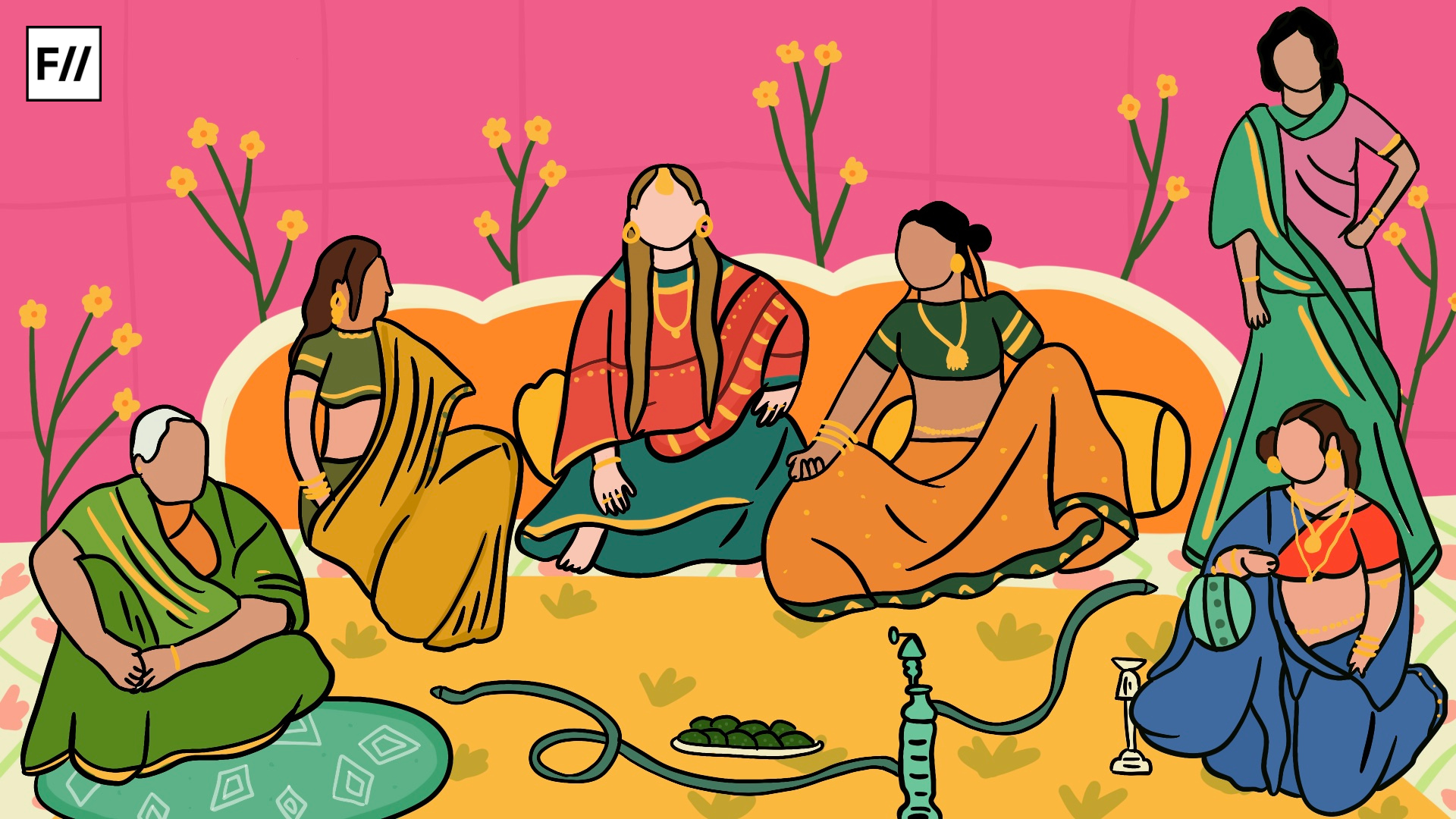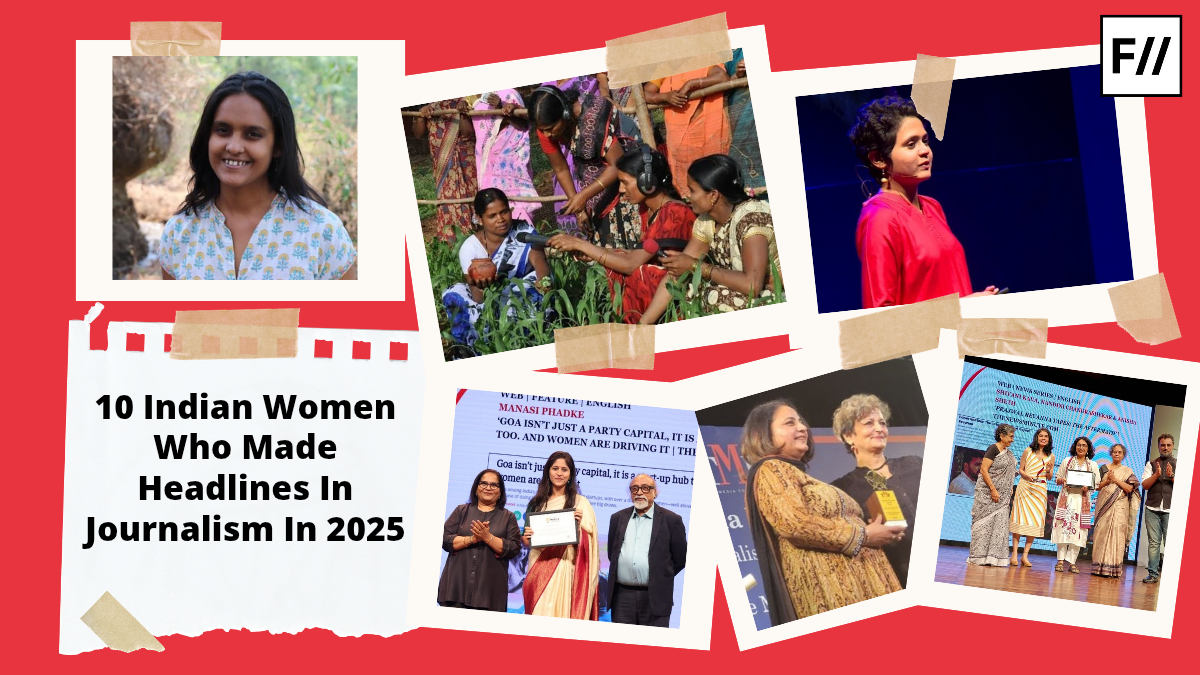Food and its procurement have always been suggested as ‘gendered,’ where men were hunters and women were gatherers. The distinction was that ‘Man the Hunter,’ is a theory suggested by anthropologists backed by fossils. The theory dominated that hunting, suggestively, was done by men, and in this narrative, hunting also gave rise to the nuclear family as women waited at home for men to bring home meat. This put women in the position of ‘gatherers‘; however, in the late 1960s, during the second wave of feminism, the theory inspired an immediate backlash against the sexist language and omission of women’s roles in hunting and gathering groups.
Food preparation as a ‘gendered,’ form is often seen as oppressive for women. A perspective by feminist scholars is just one layer of the complex implication food has with gender. When both facts are combined of diaspora and ethnic identity, the picture of gender and food becomes more of a struggle and contested.
Traditional gender roles and feminist perspectives
According to the French sociologist Pierre Bourdieu, “Habitus“ is the sense of proper conduct. One’s social skills and resources help us fit in with our specific communities. Social norms and hierarchies aren’t the priority; instead, we are ‘obligated,’ to follow social norms. This is regarded as habitus.

Habitus is a collection of social skills and resources that help us fit in with our specific communities, not a set of social norms that we feel obligated to follow.
Identities, whether ethnic or not, are more a ‘process,’ than a ‘thing,’ that one possesses compared to simply attaining; identities are ascribed. Understanding this process of identity formation is particularly significant in diaspora communities, where a fragile sense of ‘belonging,’ prevails. Ascribed identities make one identity more complex in a community of diasporas.
In this sense, Habitus describes one’s growth and nourishment in the social environment out of their life experiences and shapes their preferences for cultural items. Therefore, the sociocultural belief system and customary norms and values play a crucial impact in the selection of food and, hence, in gender equality in society.
Food often interacts with variables like caste, class, and gender in its social and cultural life, significantly organising it. This can be seen in the ritualisation and politicisation of food, which is demonstrated by food taboos—such as those related to menstruation in India, the custom of fasting and feasting, and the influence of food on politics at the state level.
Due to the reasonably ordinary character of food and its association with women’s domestic labour, this area of cultural upkeep is frequently disregarded. Food starts to be taken for granted, and its connection to women’s labour reinforces its negative connotations. Even in the context of diaspora, food and labour may be distorted due to their association with cultural preservation. When marginality comes to the centre with race, language, ethnicity or religion, the terminology of food serves as a distinct meaning medium to transmit cultural traditions and identities.
Identity formation in diaspora communities
Indian ethnic minorities, along with gendered terms, have always shared and celebrated feasts along with men, with no particular distinction of ‘women as gatherers,’ and ‘men as hunters.’ One such meal is from the land of Manipur; the Manipuri Meitie community has been following a customary tradition of preparing Ushop, a ceremonial meal which is typically served during funerals or death ceremonies. The Brahmin men usually take ahead of anniversaries and religious functions, as well as the food cooking. This ceremonial testament, Ushop, stands as one of the proud symbols of Mainipur’s cultural and gastronomic treasures.

Another among the culturally identifying and symbolic dishes in Kashmiri cuisine, Wazwan, considered both the pride and art of Kashmir, is divided by men in plurality. In Kashmiri, Waz means ‘cook,’ or ‘chef,’ and Wan means ‘shop.’ Several dishes are necessary for these occasions like Tabakh Maaz, Rista, Rogan Josh, Daniwal Korma, Aab Gosh, Marchhwangan Korma, and Gushtaba. Wazwan is the foremost term in the Kashmiri feast and is a ceremonial feast for essential events like Kashmiri weddings.
In an annual celebration in a village town in Bihar, the male devotees make sacrifices of goats in honour of Jhumraj Baba. People, as a ritual, sacrifice the goat as an offering to the deity. Following the sacrifice, the men who initially made the sacrifice are responsible for both cooking and consuming the offered meat. This traditional practice between cultural cuisine and gender dynamics offers a distinctive perspective on societal norms.
Eating habits and preparation involve both men and women in the public sphere. One of the great examples is mishri brand Jugal’s, based in Kolkata, which broke the convention of mishtis which is usually made by men. For the first time, women were involved in the making of mishiti doi, as a part of their centenary celebration.
Making traditional mishti has historically been dominated by men. Still, now Lahana has decided to provide training to women interested in learning the art of making mishti at Jugal’s kitchen. This embarks on another ethnic tradition where the kitchen doesn’t demarcate any social structures.
Marjorie DeVault suggests a theory while considering the socio-cultural analysis that women as ‘homebodies,’ are driven back from the industrialised social framework, which conceptualises work as done outside the home. This means that women’s housework—food preparation and feeding—is seen “only in terms of relationship and emotion” rather than being connected to labour or jobs. However, DeVault’s study does not consider racial and ethnic minorities, nor does it examine how these social constructs explain why people perceive food preparation and family formation differently.
Food as power and identity
It is contrasting to say that such binaries are maintained in the domestic spheres within Indian households, but we can see men have been ethnically motivated and engaged in food procurement as much as women. Women’s voluntary pursuit of the food practices that were once perceived as “oppressive,” but are now deemed as a means of agentic liberation; women’s gaining respect, status, and symbolic capital in the community for cooking archetypical/authentic Iranian dishes. Food preparation was both a source of subordination and a source of power through constructing gendered and ethnic identities, and we can see demographic and ethnic identities celebrate the food equally.

Gendered roles in ethnic households could be seen in a kitchen that is not binary but becomes a point of convergence where ethnicity, gender, food practices, and cultural capital have rejoiced. Gendered spaces in food preparation are often seen as celebrated spaces. Gendered roles in food preparation, especially for cultural ceremonies, often reinforce or challenge traditional gender norms. Diasporic communities use food as a means to negotiate and reconstruct their ethnic identity.
The traditional norms suggest and cater kitchen spaces with women, which the ethnic spaces often challenge. Food work, otherwise considered an oppressive and limiting practice for women, may develop into a source of power and transactional arrangement; food skills may become currency, culinary capital, and a resource in constructing and maintaining gendered, ethnic identities. The context of women’s lives is critical for understanding gendered roles in food.
To conclude, food is procured mainly by women in the households; men usually have a limited space to give in, which is limited to special occasions or specific cooking modes such as barbecuing. For racially marginalised, transnational and diasporic groups such as these Goan Canadian women, food may carry other equally essential meanings.
About the author(s)
Kulsoom Faiz (she/they) is a Delhi based free lance journalist, She writes on gender, culture and on marginalised communities.





